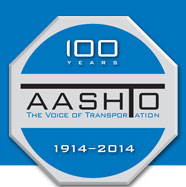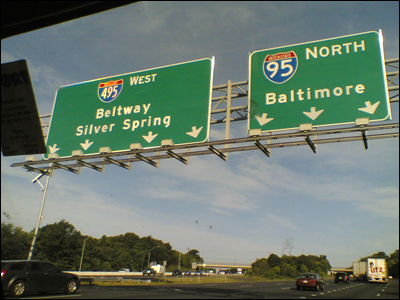
October 21, 2014
The Capital Beltway: A Ring of Honor All Its Own
By Michael Shean
Autumn is in full swing, and that can only mean one thing here in the D.C. area – the Maryland Renaissance Festival is open for business. But since the heavily attended fair draws visitors from across the capital region of Maryland, Virginia and the District of Columbia to its site northwest of Annapolis, traveling to it also highlights a major transportation artery: the Capital Beltway.
My wife loves the Renaissance festival. Nearly every year we make the roughly two-hour pilgrimage from our Virginia home up to the town of Crownsville, Maryland, where turkey legs and costumed performers and a sea of corseted dresses – still among the most impressive works of engineering known to humanity – are the order of the day.
Getting there for us means pulling up stakes, heading across the Beltway, and generally jockeying for position to arrive before most of the 15,000 others who attend each day the fair is open. And let’s also remember that with the fall comes the start of NFL season. Washington is a football town par excellence, so the crowds that gravitate to and from FedEx Field on game day – just inside the Beltway west of downtown D.C. -- can make even the most stalwart knight falter from the traffic challenges. That’s nearly a hundred thousand extra people hitting area roads on many weekends during autumn. Not for the faint of heart.
Yet we make it to the Renaissance Festival, every weekend, on time (well, more or less) and with relatively minimal fuss. Certainly the Metro subway system has a lot to do with it, since it ensures that not everybody on the way to watch the NFL team in Landover has to drive. But the true vein of travel to move around the Washington area is to drive along Interstate 495, a.k.a. the Capital Beltway.
Yes, the Beltway, an often unfairly maligned work of civil engineering that is as much a landmark of the region as the Washington Monument or the White House. For those of us living in the capital, it can sometimes seem as much a curse as a blessing, but it is undeniably a vital part of our everyday existence.
The concept of the Beltway dates back to 1944. That’s when Fred W. Tummler, director of planning of the National Capital Park and Planning Commission, first pitched the idea of a freeway that would connect D. C. to surrounding counties.
The Beltway was originally imagined to be a kind of bypass for traffic running down the coast of the eastern United States to avoid driving straight through Washington. This early iteration was referred to by the somewhat cumbersome moniker of the Inter-County Metropolitan Freeway.
In 1951, the Senate Public Works Committee asked the Public Roads Bureau to prepare plans for the project; the original idea was limited to run only between one small slice of territory connecting Maryland and Virginia. But this quickly evolved into a project to encircle all of Washington’s suburban area by the end of 1952. Though designed to speed traffic flows, the Beltway concept was also meant to provide an alternative route for military traffic in the event of an emergency.
The federal government gave final approval in 1955 for what had become the Circumferential Highway. The first section of that interstate loop, which stretched 64 miles and included the Woodrow Wilson Memorial Bridge, opened Dec. 21, 1961. The rest of the highway was completed Aug. 17, 1964.
Though originally meant to divert long-distance drivers away from the capital and ease traffic along the East Coast, explosive growth of the Washington suburbs quickly turned the Beltway into a primary artery for local traffic as well.
By now, the number of people traveling the Beltway strains its capacity, with congestion slowdowns that draw the ire of local users and distance travelers alike. Proposals to expand the Beltway range from adding more lanes on its existing route to creating an entirely new, outer ring of high-speed roadway. However, most of these plans have never gotten off the ground.
Nevertheless, the aging Beltway circuit carries nearly 200,000 vehicles a day across the capital region. Those lanes help ensure that business deliveries can be made, errands can be run, that people can make their way to and from work or tourist destinations. Sometimes, even a Renaissance festival.
Sure, sometimes my wife and I arrive at that festival too late to buy tickets, or the crowds are just too much for us to stay long and enjoy it. But when that’s happened, it certainly wasn’t because the Beltway didn’t let us get there. We may watch knights in the lists of a weekend, jousting to cheers of the crowd, but you could say that the Beltway is a ring of honor in its own right. Despite the massive surge in population the Washington area has seen in the last 50 years or so, that vital roadway has stayed true.
And that, I think, is worth more than a few rounds of huzzahs.






































